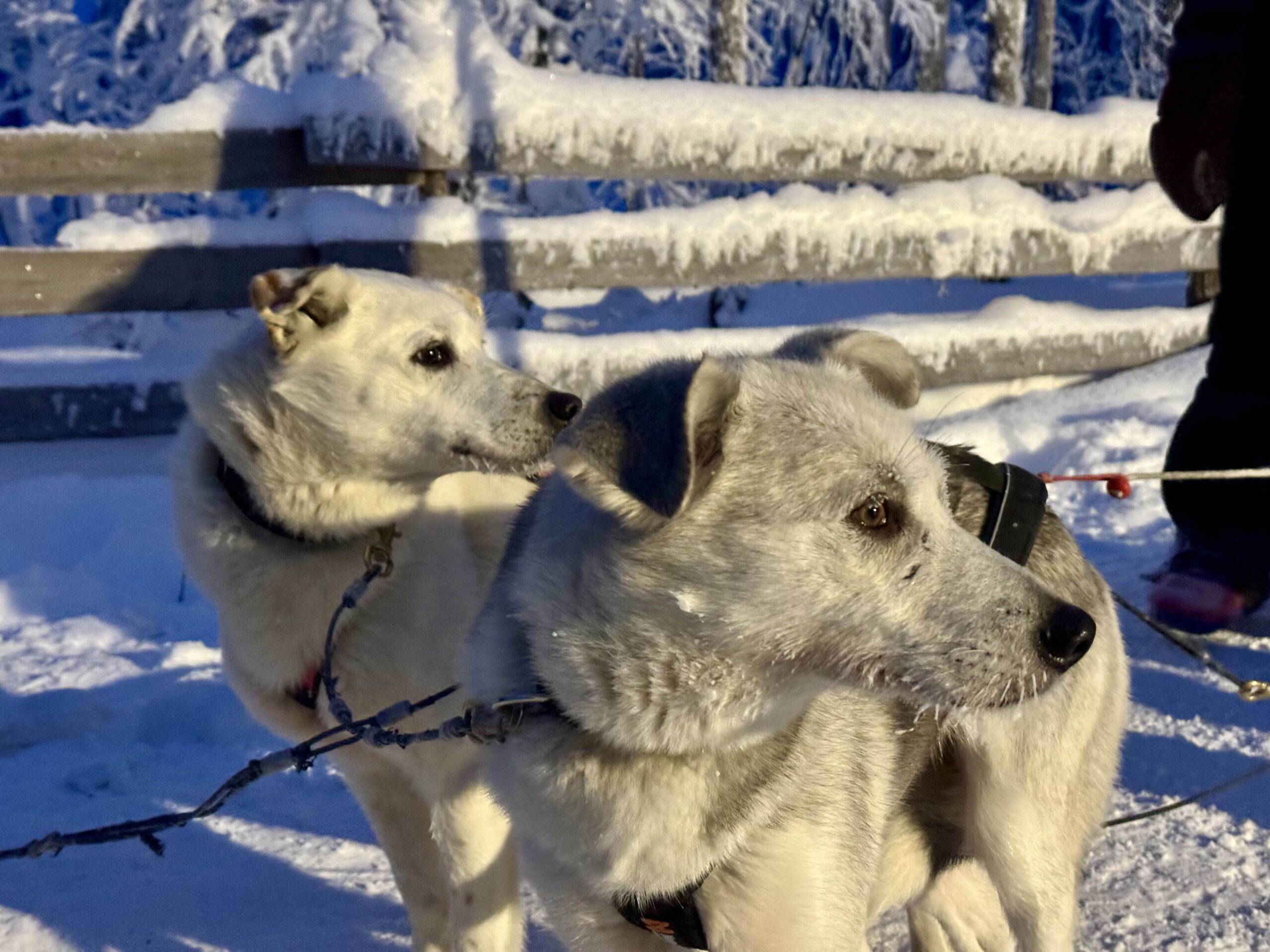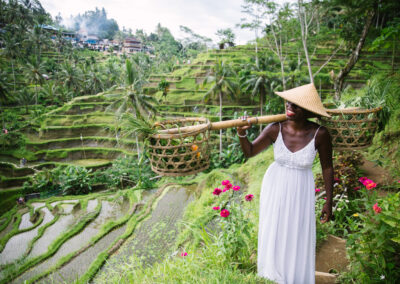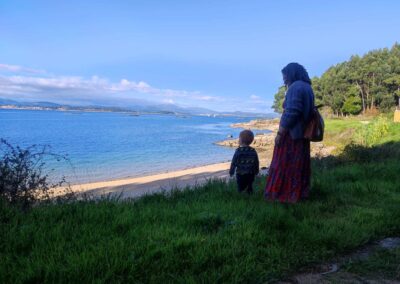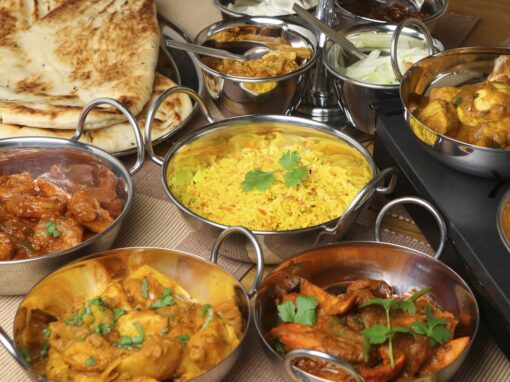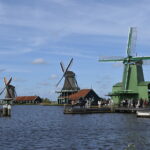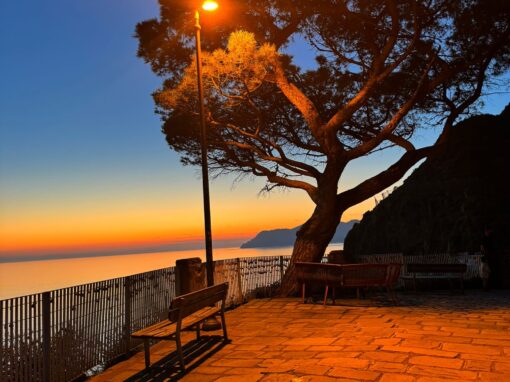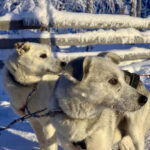When the word ‘Lapland’ swirls through your mind, what follows is vivid scenes of energetic huskies racing through pristine snow, the thrill of embarking on a husky safari. Dive into the heart of the Arctic with an interview with one of Finland’s dedicated husky trainers, we unravel the daily routines, sled teams, and the personalities of these lovable huskies and their trainers.
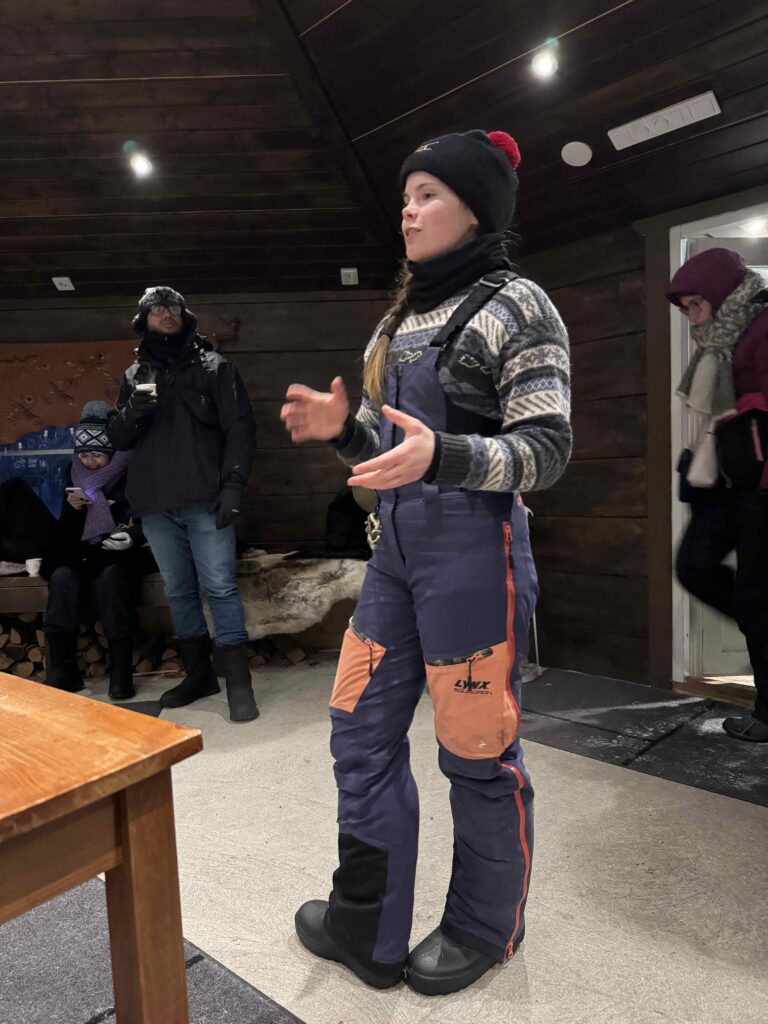
In the tranquil arms of the Arctic, huskies sprint across the snow. Their paw prints form ephemeral marks on the untarnished canvas, embodying a ballet of strength and nimbleness.
Johanna Mäkelä, a 23 years old husky trainer at Raitola Reindeer and Husky Farm in Rovaniemi, Finland, peels back the layers of the farm. Nestled within the Lapland wilderness, these grounds transcend mere breeding spaces for iconic sled dogs; they are sanctuaries of Arctic tranquillity.
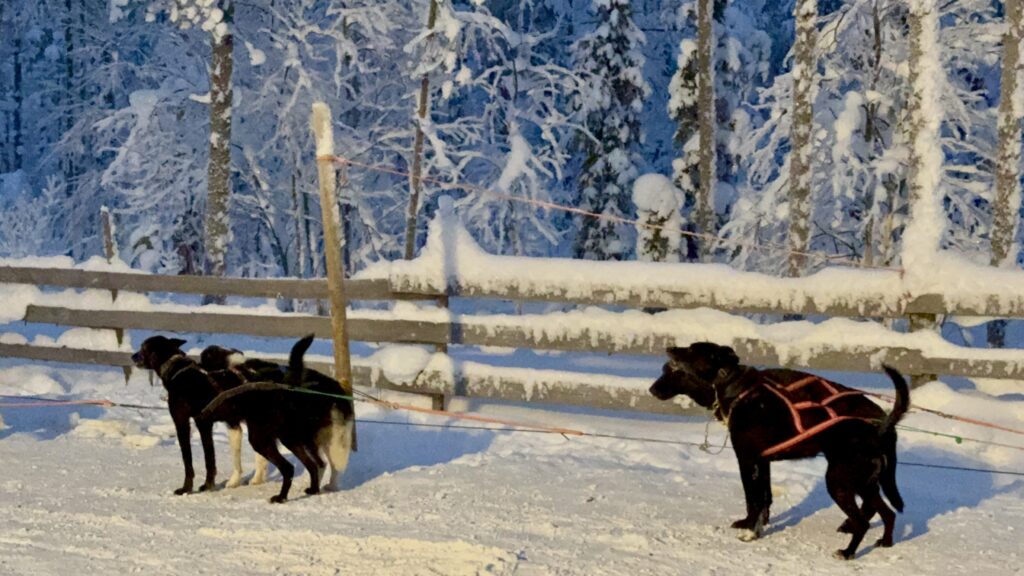
The Arctic Lifestyle of Huskies
A sled dog undergoes training to expertly pull a land vehicle, often a sled, across snow-laden landscapes. These extraordinary dogs have been indispensable in the Arctic for over 8,000 years, serving as the primary mode of transportation until the 20th century.
Huskies are now recognised as the world’s top long-distance runners. There are three primary types of sled dogs: long-distance, mid-distance and sprint dogs.
“The dogs we have here are mid-distance dogs, they could run about 70 kilometres in one day. For long distance dogs, they can do up to 200 kilometres in one day. For the sprint dogs, they usually go only about 30 kilometres in one day, but their speed is super fast, can be more than 30 kilometres per hour. ” says Johanna.
The farm keeps approximately 200 dogs, and most of them are Alaskan Huskies. As an Arctic dog breed, they enjoy colder temperatures and find comfort in the range of -20 to 20 degrees Celsius.
She says: “Husky is a super working dog breed and we start to train our dogs when they’re about one year old.” Training for the season begins in autumn when temperatures drop below 10 degrees Celsius.
In the absence of snow during September and October, they employ wheels and all terrain vehicles for the initial training, gradually increasing the distance as winter approaches, transitioning into full-time work during the winter.
“We put them in the team with the older ones to learn how to behave and be calm. When they are about two years old, then they can start working full time already. Our young huskies are usually working for four days and then have one day off” says Johanna.
Dogs work actively throughout their adult life until around 10 to 11 years old, differing from each other. Johanna adds: “They start to retire gradually after 10-years-old. They still live here usually, as long as they are happy and healthy because this is their home.”
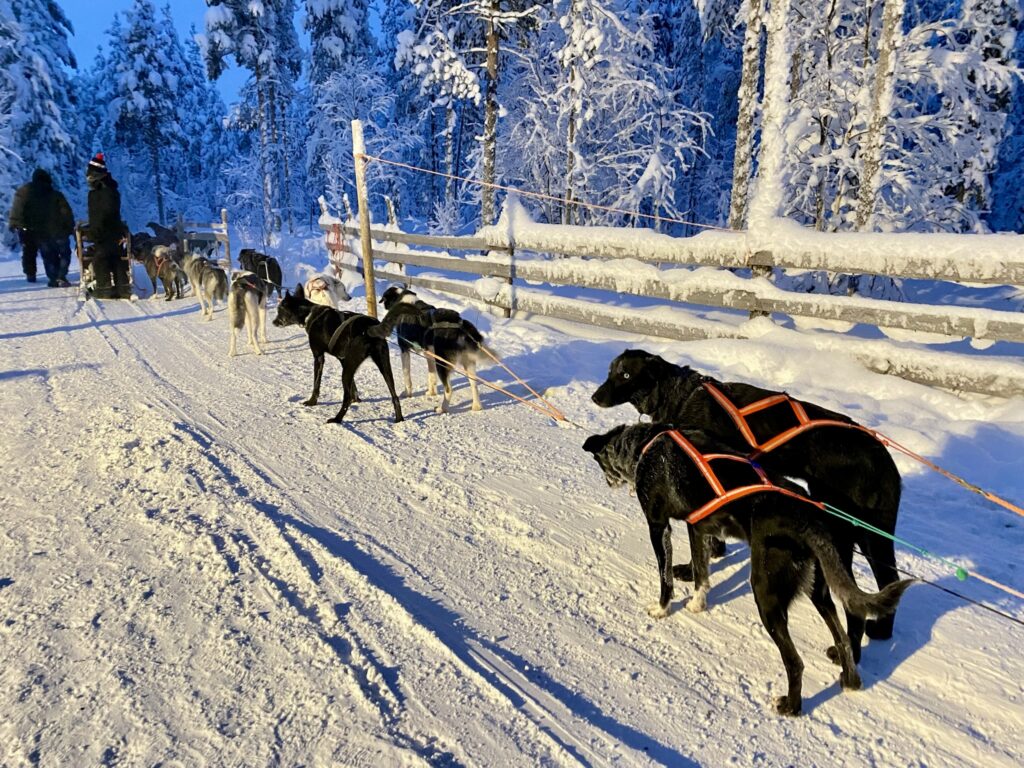
Team spirit of husky sledding
The dogs in the farm have a unique name and the farm breeds its leaders, each following a specific naming theme, such as ‘Lion King’ or ‘Star Wars’. “The dog who is working with us today is Lotus, who is from the sports car team and she is the leader”, says Johanna.
Regarding the team composition, each team consists of 10 dogs, with two leaders at the front who play a crucial role in guiding the team.
She says: “The leaders are the brains of the team, they need to be smart and they need to understand commands.” Leaders must have strong motivation to propel the team forward and then following them are the team dogs, contributing to maintaining speed.
Team dogs, situated in the middle of the team, are helping to maintain the team position and sustaining the running speed. Essentially, any dog can fulfil the team position.
The back position, often referred to as the wheel dogs, comprises the strongest members, responsible for pulling the sled’s weight and steering.
Gender doesn’t determine their role, as both males and females can excel in any position, emphasising the importance of adaptability and skill over strength or intelligence alone.
“It doesn’t mean it’s always girls in the front and boys in the back, and it’s not always the strongest ones as the wheel or the smartest ones as the leader because they need to swap their positions for running long distances” according to Johanna.
While most huskies get along well, occasional conflicts may arise and trainers need to take necessary measures to avoid conflicts.
She says: “Most of them get along very well but of course every single dog has their own personality just like humans. Not every person could be friends with each other and the dogs also.
“We always try to avoid conflicts so we take them apart if they are fighting but most of the huskies are animals and they’re used to it.”
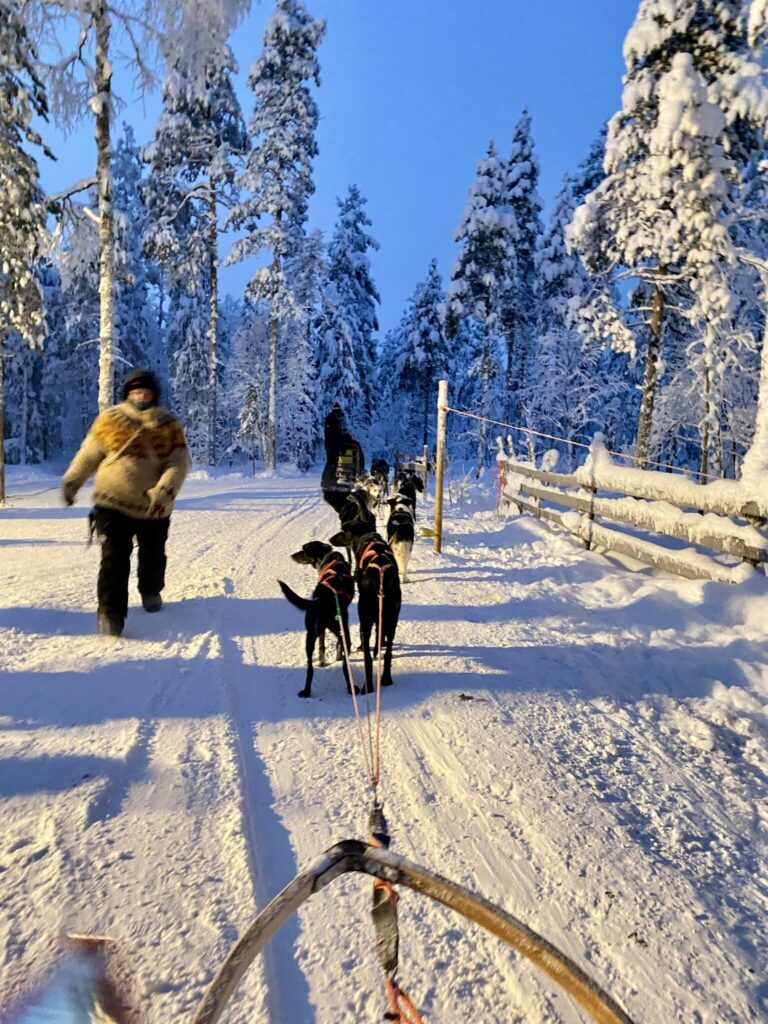
Routine of a trainer
Being passionate about animals and nature, Ms Mäkelä has dedicated five years to her role at the husky farm. Her passion for fostering a connection between humans and nature is reflected in her dedicated work at the farm.
“I love my job so much. I love to work with animals, I love to work in nature and of course with people also. I really enjoy winter, it is perfect. For me, the weather is not a problem. The only thing I found challenging is maintaining big groups of people”, says Johanna.
To start the day, the carers begin with serving breakfast to the huskies and kennel workers take care of the dogs. Following that, Ms Mäkelä and her fellow trainers start forming teams for the self-driving programme, typically creating 10 to 15 teams of five dogs each.
She says: “Every morning, there’s a few kennel workers giving the soup for every single dog, and then we and the guides will come to train and build teams for the dogs, and then we have the safari tour and customers going off pretty much for the whole day.”
As the safari tour wraps up in the evening, the teams are regrouped, brought home, and served soup for dinner. Following that, the dogs receive their meal, signifying the end of their daily routine. Any extra tasks throughout the day might offer them some leisure time.
During the summer holiday, the routine involves cleaning cages, with four workers managing various chores. Cleaning also takes place in winter, handled by kennel workers.
The team addresses fieldwork, grooming, and ends the day with feeding the dogs. She says: “During the summer there’s only about four workers, so we are taking care of everything, we are cleaning the cages and we have to fix the field, cutting the dog nails and brushing their hairs.”
Most of the huskies are friendly and social, although a few may be bashful. They generally get along well due to their pack nature, accustomed to running and living together.
“There are many different kinds of personalities for dogs, just like humans. Some of them are more shy, some of them are super friendly with people. Husky is a super friendly breed, they are not aggressive towards people ever” Johanna says.

Sarafi Experience
Participating in the Husky Safari Experience is an exhilarating journey into the heart of Lapland’s wilderness. As a husky trainer, each day unfolds with the excitement of building teams for self-driving programs, ensuring every dog is ready for the adventure.
Under the guidance of Ms Mäkelä, participants become immersed in the intricacies of husky care and the thrill of guiding their own team through the pristine Arctic landscape.
Before the journey ahead, huskies were barking and howling. They were so excited to start the adventure. Johanna and her fellow trainers will instruct riders on safety measures for sledding and demonstrate the commands used to guide the dogs.
When the sledge glides through the snow-covered terrain, Ms Mäkelä shares her wealth of knowledge about the huskies and their unique characteristics. The speed became really fast by the energetic run of the huskies, creating an unforgettable journey for all participants.
As a rider, you can relax and relish the speed during the approximate 800m journey. Enjoy a leisurely ride over the 800m trail. Following the safari, you have the opportunity to capture moments with huskies and pet their fluffy fur. The safari will be guided in English and hot berry juice and cookies will be provided to keep you warm after riding the sledge.
Raitola Reindeer and Husky Farm
Address: Välttikankaantie 11, 96900 Saarenkylä, Finland (10 minutes drive from Rovaniemi airport or 35 minutes by bus)
Tel: +358 40 822 3299
Website: https://raitola.fi/ (Booking in advance is recommended)
Duration: 1 hour
Price: €154/adult, €115/child (aged 4-12)


